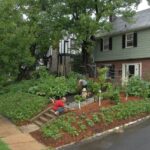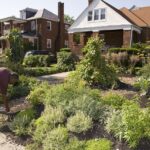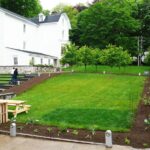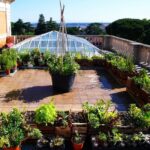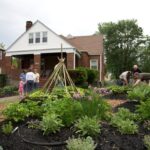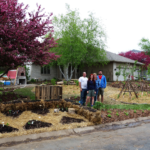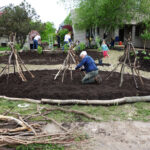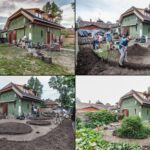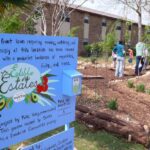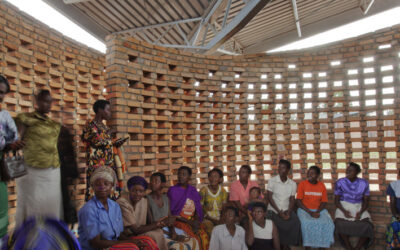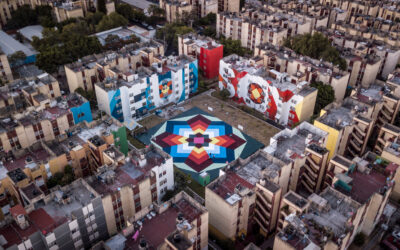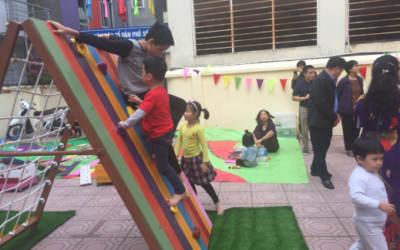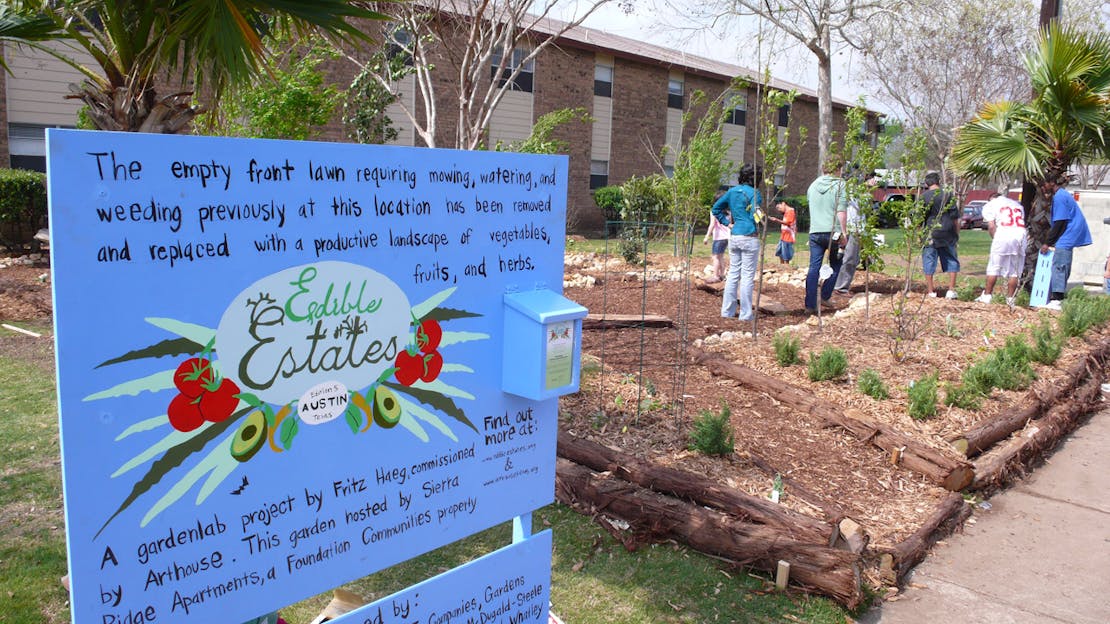
Edible Estates was initiated on Independence Day 2005 with the planting of the first in the series of gardens in Salina, Kansas, the geographic center of the United States. Domestic front lawns are replaced with edible landscapes which are then documented in photos, videos, stories, printed materials, and exhibitions. Other regional prototype gardens have since been planted in Lakewood, CA in 2006; Maplewood, NJ and London in 2007; Austin, Baltimore, and Descanso Gardens, Los Angeles in 2008; Manhattan in 2009; Ridgefield, CT and Rome in 2010; Istanbul in 2011; Budapest, Hungary in 2012. The final four editions are planted in Holon, Isreal; Aarhus, Denmark; Vasby, Sweden; and Minneapolis-St. Paul, MN in 2013, followed by the 2014 publication of the expanded third edition of the book, “Edible Estates: Attack on the Front Lawn” (Metropolis Books, 2010), documenting all sixteen gardens in the series, with stories from the garden owners, and framed by essays from renowned garden writers.
Edible Estates is an ongoing initiative to create a series of regional prototype gardens that replace domestic front lawns, and other unused spaces in front of homes, with places for families to grow their own food. The sixteen gardens have been established in cities across the world. Adventurous residents in each town have offered their front yards as working prototypes for their region. Each of these highly productive gardens is very different, designed to respond to the unique characteristics of the site, the needs and desires of the owner, the community and its history, and the local climate and geography.
Most of these gardens are commissioned by local art institutions and developed in partnership with horticultural, agricultural, or community gardening organizations. Working together with the owners, neighbors, friends, and local volunteers, each garden is planted in the spring or early summer. The story of its creation and first season of growth is presented with a public exhibition, which includes videos, weekly garden portraits by a local photographer, a series of workshops on growing food, and printed brochures featuring local planting calendars and gardening resources.
These simple, low-cost gardens and their stories are meant to inspire others, demonstrating what is possible for anyone with the will to grow food and some unused land between the house and the street. Unlike the unattainable images of perfection seen in design and gardening magazines, anyone should be able to look at these gardens and imagine doing something similar at home. These are real-life gardens, tended by typical families in a variety of common living situations, from homes in the outer suburbs to inner-city apartments.
With the modest gesture of reconsidering the use of our small plots of land, the Edible Estates project invites us to reconsider our relationships with our neighbors, the sources of our food, and our connections to the natural environment immediately outside our front doors.
Recommended by Beatrice Ricci
Main source: http://www.fritzhaeg.com/garden/initiatives/edibleestates/about.html
Additional sources:
https://walkerart.org/magazine/gardening-halfway-between-hope-and-doom-fritz
https://www.splendidtable.org/story/2013/08/09/reclaiming-the-front-yard-with-edible-estates

